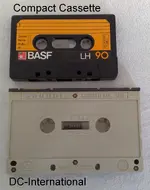C
CSP
Member
32Hz Pipe Organ
Dave, You are almost correct !!!
From when I worked there (sound dept management and FOH) for its first 16years and having to have dealings with Ron Sharpe (the organ's designer and builder) the organ in the Concert Hall of the Sydney Opera House goes down to 16.35Hz (32ft).
The largest pipes of the organ belong to the Prinzipal 32 ft, the biggest four are constructed of 50 mm (2 in) thick marine plywood and are hung on the rear wall.
AND being in the room that it is installed into --- full timber paneling walls, about a 90ft high ceiling and timber floors and long enough to almost need binoculars to see the stage from the sound booth that is located almost against the ceiling at the very rear of the Hall -- when played to full extent it sounds nothing but amazing.

Photo taken from Opera House's stock photos.
David
Some 'High End' designs eschew capacitors and use DC servo circuits to keep outputs at 0 volts. I find the claims for better fidelity dubious...the MORE so since these same designers often extol the sonic virtures of transformers! The latter will always introduce more distortion than a well specified electrolytic capacitor.
Maybe it's a 'snob' thing? Capacitors are cheap, = BAD! Transformers are expensive, especially really good ones, = GOOD.
I always wonder? Say you have a totally DC coupled path from an AI to a DC servo'ed, DC coupled 200W active monitor and just ONE servo in the chain goes 18 volts ape shit? !!
I cannot remember the last time I had an electrolytic capacitor short?
Oh! BTW BSG, there is a church organ with a 16Hz pedal pipe! In Oz somewhere I think.
Dave.
Dave, You are almost correct !!!
From when I worked there (sound dept management and FOH) for its first 16years and having to have dealings with Ron Sharpe (the organ's designer and builder) the organ in the Concert Hall of the Sydney Opera House goes down to 16.35Hz (32ft).
The largest pipes of the organ belong to the Prinzipal 32 ft, the biggest four are constructed of 50 mm (2 in) thick marine plywood and are hung on the rear wall.
AND being in the room that it is installed into --- full timber paneling walls, about a 90ft high ceiling and timber floors and long enough to almost need binoculars to see the stage from the sound booth that is located almost against the ceiling at the very rear of the Hall -- when played to full extent it sounds nothing but amazing.

Photo taken from Opera House's stock photos.
David




